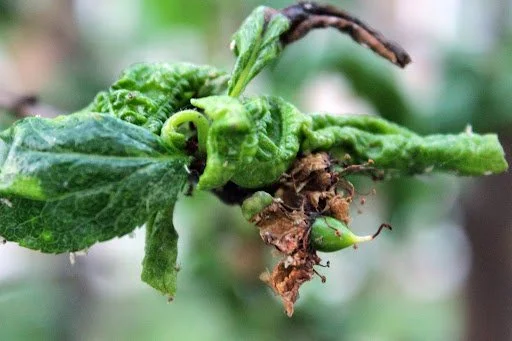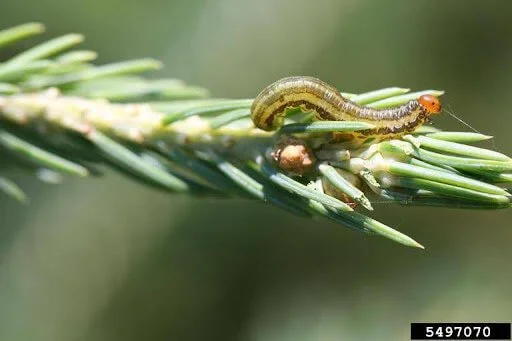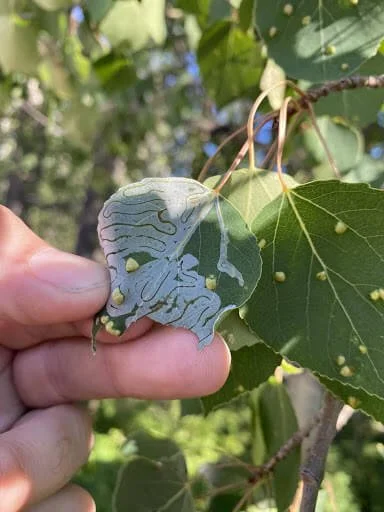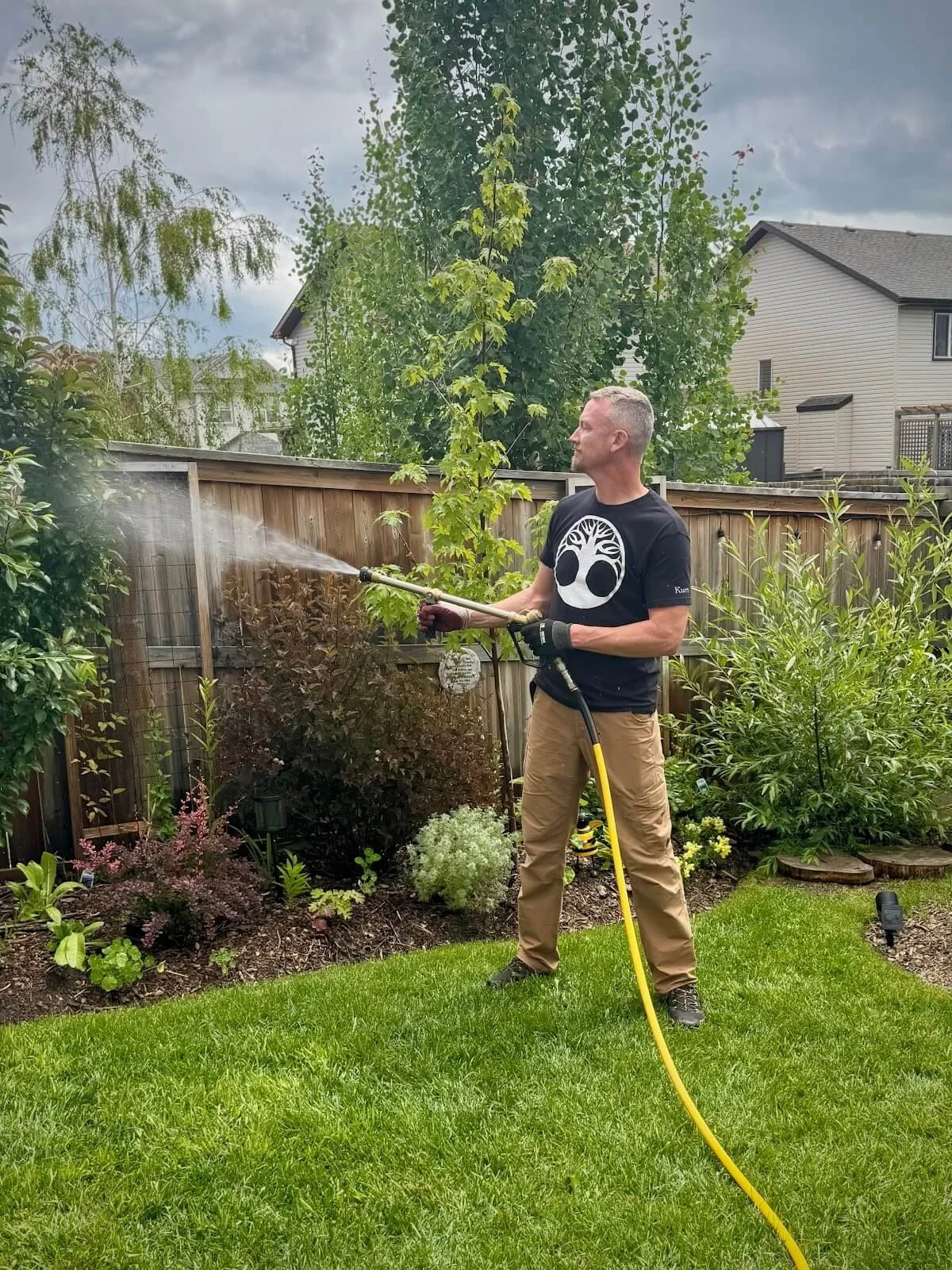Why Are There So Many Bugs on My Tree?
Understanding Aphids, Wasps, and Insect Damage in Cochrane Trees and Shrubs
Have you noticed your tree covered in tiny bugs? Sticky leaves? Swarms of wasps circling around?
Insects like aphids, leafhoppers, caterpillars, and mites are common in Cochrane and NW Calgary, especially in spring and early summer. But if your tree seems to be under constant insect attack, there’s a deeper issue going on — and it’s not just about the bugs.
Insects don’t randomly target trees. They’re drawn to weakened, stressed trees — ones that are already struggling below the surface. If your tree is constantly under attack, the real problem is likely in the soil biology and internal chemistry — and that’s where the right solution begins.
What’s Really Attracting Insects to Your Trees?
The idea that bugs just “show up” is a common myth. In reality, most insects — especially sap-sucking pests like aphids — are biologically attracted to trees that are emitting stress signals.
When trees are unhealthy or unbalanced internally, their leaf sap contains excess amino acids and simple sugars — a perfect food source for insects. This is what draws them in.
Common Signs in Our Area:
Aphids, scale, mites, and leafhoppers
Small insects clustering on the undersides of leaves or along stems.
Often leads to yellowing, curling, or wilting leaves.
Aphids especially leave behind sticky residue called honeydew, which can attract ants or mold.
Wasps and hornets
Wasps are not attacking your tree — they’re often feeding on honeydew or hunting other insects like aphids or caterpillars.
A heavy wasp presence often points to a larger pest issue in the tree.
Chewed or skeletonized leaves
Caterpillars, sawflies, and beetles may chew holes or eat the soft tissue of leaves, leaving behind lace-like patterns.
Premature leaf drop or tip dieback
Heavy infestations can cause the tree to drop leaves early or show signs of stress at the branch tips.
Why It’s Happening: The Root Cause of Insect Attack
Insects don’t attack healthy trees. They target those already weakened by issues like:
Compacted or biologically inactive soil
Drought stress or poor root structure
Overuse of synthetic fertilizers, which disrupt the natural balance
Damage from pruning, mowing, or environmental conditions
As Dr. Thomas Dykstra’s research has shown, insects use electromagnetic and olfactory cues to detect stressed plants — they are nature’s cleanup crew, removing what isn’t thriving. If your trees are constantly a magnet for pests, it’s a signal that something deeper is off.
Why Chemical Sprays Are the Wrong Solution
It’s tempting to fight back with sprays, traps, or commercial pesticides — but these only offer short-term relief, and often make the problem worse in the long run.
Chemical sprays kill both pests and beneficial insects, including predators like ladybugs, lacewings, and parasitic wasps — upsetting your tree’s natural defense system.
Synthetic fertilizers, especially those high in nitrogen, cause soft, fast growth that’s even more attractive to aphids and other pests.
Both approaches damage the soil food web, making your trees more dependent on outside inputs and less resilient over time.
What Can You Do Instead?
Instead of fighting symptoms, we focus on restoring balance — starting from the roots and working our way up.
Organic Bioactive Tree Treatments – Our foliar sprays and deep root inoculants rebuild the natural microbiology in your soil and improve nutrient cycling in your trees. When leaf chemistry shifts, insects stop being attracted — it’s that simple. These treatments are organic, regenerative, and safe for people, pets, pollinators, and wildlife.
Tree Health Consultations – We assess your trees and yard, identify signs of pest pressure, and offer holistic, soil-first solutions that reduce your dependency on chemical treatments.
Targeted Pruning & Guidance – In some cases, strategic pruning can help reduce habitat for insects or remove infested areas, especially in shrubs and hedges.
A Regenerative Approach to Tree Health
At Cochrane Tree Care, we don’t just treat bugs — we treat the cause. Our regenerative philosophy focuses on building long-term resilience through improved soil health, stronger root systems, and balanced tree nutrition.
When your tree is healthy from the inside out, it stops attracting pests altogether. That’s our goal — not just symptom relief, but real, lasting change.
Take the Next Step
If your trees are under attack from insects, don’t reach for the spray can — reach out to us.
👉 Book a Tree Health Consultation – Spend 30–60 minutes with Kurt reviewing your trees, identifying pest issues, and creating a custom regenerative plan.
👉 Explore Our Organic Tree Treatment Program – Four visits per year, starting at $399 for small properties, including foliar sprays and/or deep root injections.
👉 Request a Quote or Upload Photos – Quick form to help us understand your concerns.
About Kurt & Cochrane Tree Care
Kurt Stenberg is a regenerative arborist, permaculture practitioner, and certified arboriculture instructor with Arboriculture Canada. He also hosts the Arborist Blueprint Podcast, helping arborists across the world shift toward tree health-first practices.
At Cochrane Tree Care, we specialize in tree consultations, organic treatments, and sustainable solutions for long-term tree vitality.




